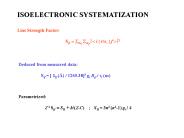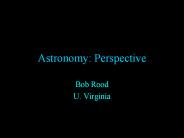Earthlike PowerPoint PPT Presentations
All Time
Recommended
The Earthlike Planets. Planets of the Inner Solar System. Earth. Molten ... Lobate scarps. History of Mercury. Differentiation. Major collision. Heavy cratering ...
| PowerPoint PPT presentation | free to view
When Mars Was the Most Earthlike Planet
| PowerPoint PPT presentation | free to view
CO2 loss = carbonate sedimentation organic burial ... Rate of organic carbon burial decreases a lot, if seafloor is oxygenated and has ...
| PowerPoint PPT presentation | free to download
The Inner Solar System Earth-like ... The Outer Solar System- The Jovian Planets. Is Pluto a planet, or it is an asteroid ? The 10th Planet of the Solar System ...
| PowerPoint PPT presentation | free to view
The effective temperature of a planet is a function of the planetary albedo (A) ... The planet must have plate tectonics to avoid runaway glaciation (as in Mars, ...
| PowerPoint PPT presentation | free to view
Z 2 Sif SH b/(Z-C) ; SH = 3n2 (n2-1) gi / 4. Dirac Equation calculation. Singlet-Triplet ... Alkali-metallike ns np. Alkaline-earthlike ns2 nsnp ...
| PowerPoint PPT presentation | free to download
The Surface and Atmosphere of TITAN. An Earthlike' body. Haze, Drizzle, clouds and rain? ... 6 10-2 (at 3900 km) 7 10-2 (near surface) Methane, CH4. 4.5-8.5 10 ...
| PowerPoint PPT presentation | free to view
Inner Planets- Mercury, Venus, Earth, and Mars. Called Terrestrial planets (Earthlike) ... more distant than Sedna, the planetoid discovered almost 2 years ago. ...
| PowerPoint PPT presentation | free to view
... due to non-Lambertian regolith reflectance, weak gravitational 'down' cues. ... Regolith reflectance is not Earthlike (non-Lambertian) ...
| PowerPoint PPT presentation | free to download
Inner Planets Outer Planets Mercury Mars Venus Earth The Inner planets are grouped ... The Moon Interesting Facts: Only planet with known life, ... Other titles ...
| PowerPoint PPT presentation | free to download
A thesis tells the writer s point not just the topic. I am going to be writing about baseball. The reader has no idea what point the writer will try to make about ...
| PowerPoint PPT presentation | free to download
This (which can be written in many similar ways) ... First per planet may always win... Contingency (Africa versus South America) ... How to cheat Frank Drake ...
| PowerPoint PPT presentation | free to download
Life may have originated on Mars during the liquid water era ... A 'Face' on Mars. Meteorites from Mars have been scrutinized for life-forms ...
| PowerPoint PPT presentation | free to download
The Earth in Space Chapter 1, Section 2 The Solar System Solar System- Sun with 9 planets and other bodies revolving around. Earth 3rd planet from the sun.
| PowerPoint PPT presentation | free to view
We are not alone: Other planets, other earths? Edmund Bertschinger MIT Department of Physics and Kavli Institute for Astrophysics and Space Research
| PowerPoint PPT presentation | free to download
0 The Origin of the Solar System Planetary Orbits Neptune Uranus Saturn Jupiter Mars Earth Venus Mercury All planets in almost circular (elliptical) orbits around the ...
| PowerPoint PPT presentation | free to download
Chapter 20 Planet Earth
| PowerPoint PPT presentation | free to download
What changes populations? (Ch. 23) Forces of evolutionary change Natural selection traits that improve survival or reproduction accumulate in the population ADAPTIVE ...
| PowerPoint PPT presentation | free to download
Title: PowerPoint Presentation Author: Robert Rood Created Date: 3/28/2004 11:13:21 PM Document presentation format: On-screen Show Other titles: Times New Roman ...
| PowerPoint PPT presentation | free to download
The Atmosphere A. Origin of the Atmosphere B. Human ... Surface of first interaction of solar wind with Earth s magnetic field = Bow shock Region where Earth ...
| PowerPoint PPT presentation | free to download
Astrobiology: The Semester in Review HNRT 228 with Dr. Harold Geller
| PowerPoint PPT presentation | free to download
Mass and radius give mass/volume ... Lowlands: Undulating lava plains ... Lowlands: Cratered southern hemisphere (wind erosion now; water erosion in past) ...
| PowerPoint PPT presentation | free to download
Astrobiology: The Semester in Review Honors 228 with Dr. Harold Geller
| PowerPoint PPT presentation | free to download
( 20 pts)The innermost moon of Mars, Phobos, is potato shaped , and like Mars , ... It also carries a small chemical rocket engine. ...
| PowerPoint PPT presentation | free to view
Chapter Introduction Lesson 1 Observing the Universe Lesson 2 Early History of Space Exploration Lesson 3 Recent and Future Space Missions Chapter Wrap-Up
| PowerPoint PPT presentation | free to download
http://www.physics.umn.edu/courses/1910W. Format: Lecture/discussion in class periods. ... The emphasis is on what science can tell. us about this ancient question. ...
| PowerPoint PPT presentation | free to view
No solid surfaces to preserve changes ... Convection (fluids; lower density blobs rise) Radiation (radiate energy, emitted and absorbed) ...
| PowerPoint PPT presentation | free to view
Title: The Milky Way Author: Markus Boettcher Last modified by: roberts Created Date: 2/23/2003 4:28:17 AM Document presentation format: On-screen Show
| PowerPoint PPT presentation | free to download
Water is essential for every form of terrestrial life as ... THEMIS (Mars Odyssey) & TES (MGS) LAZER Altimeters. MOLA on Mars Clobal Surveyor. Image Analysis ...
| PowerPoint PPT presentation | free to view
Note that the following lectures include animations and PowerPoint effects such as fly ins and transitions that require you to be in PowerPoint's Slide Show mode
| PowerPoint PPT presentation | free to download
Examples: pre-stellar cores, protostellar envelopes, outflows, hot cores, protoplanetary disks... dust grains in the center of pre-stellar cores. Dust grain ...
| PowerPoint PPT presentation | free to view
Note that the following lectures include animations and PowerPoint effects such as fly ins and transitions that require you to be in PowerPoint's Slide Show mode
| PowerPoint PPT presentation | free to download
0 Note that the following lectures include animations and PowerPoint effects such as fly ins and transitions that require you to be in PowerPoint's Slide Show mode
| PowerPoint PPT presentation | free to view
'Barycentric' Motion Within a Two-Body System. Star. with. mass. Ms. Planet. with. mass. Mp ... Thus, the planet transits the star and produces a small decline ...
| PowerPoint PPT presentation | free to view
synthetic worlds the business and culture of online games any computer generated physical space represented graphically in three dimessions that can be experienced by ...
| PowerPoint PPT presentation | free to download
Neil F. Comins William J. Kaufmann III Discovering the Universe Eighth Edition CHAPTER 5 Formation of the Solar System Essay Questions for this Lecture What are ...
| PowerPoint PPT presentation | free to download
Formation of the Solar System and Other Planetary Systems * * Astronomical Jargon asteroid asteroid belt average density chemical composition comet dynamo escape ...
| PowerPoint PPT presentation | free to download
Sense of rotation: counter-clockwise (with exception of Venus, Uranus, and Pluto) ... Mercury and Pluto: Unusually highly inclined orbits. Planetary Orbits and ...
| PowerPoint PPT presentation | free to view
Could discuss provenance- the properties of an apple ... Imaging from Huygens probe descent into Titan's atmosphere. Note evidence for dendritic channels. ...
| PowerPoint PPT presentation | free to view
Upper Stellar Mass Limit Eta Carina is a star of almost 100 solar masses. Radiation pressure is blasting off the outer parts.
| PowerPoint PPT presentation | free to download
... Review Requirements for Life Elements, Energy, Water, etc. Biological Tour of the Inner ... Not in textbook * Guiding Questions in Comparative Planetology ...
| PowerPoint PPT presentation | free to download
Terraforming isn't such a crazy idea when compared to our level of technology ... locked away in the regolith. How to Terraform? Mathilde NEAR Flyby on 27 July 1997 ...
| PowerPoint PPT presentation | free to view
The Origin of Our Solar System Chapter Eight Introduction To Modern Astronomy I: Solar System Constrains of Models Any theoretical model must be able to explain the ...
| PowerPoint PPT presentation | free to download
How many stars are there in the solar system? Was the solar system created as a direct result of the ... Common Properties of Planet Orbits in Our Solar System ...
| PowerPoint PPT presentation | free to view
Interstellar Globules: droplets rich in organic molecules made by exposing ice, ... Keck Observatory infrared image of star HR8799 and three orbiting planets with ...
| PowerPoint PPT presentation | free to download
About 100 years ago, Albert Einstein (1879-1955) began to explore anew the ... Einstein eventually realized that these objects all followed the same path ...
| PowerPoint PPT presentation | free to download
Evolution of the Earth David Spergel Evolution of Earth s Atmosphere Earth lost its early atmosphere in major collisions (first 10-100 Myr) Subsequent infall of ...
| PowerPoint PPT presentation | free to download
Cosmic Quotations, Poetry, and Prose: A compilation of reflections on our Universe. Edited by Julie Ware, Physics 133 Extra Credit Project
| PowerPoint PPT presentation | free to download
Future satellite missions (DARWIN, TPF) will detect terrestrial exoplanets ... Spectra for varied abundances, using fixed T profile: Des Marais et al. 2002. This work: ...
| PowerPoint PPT presentation | free to download
Large, low density, gaseous planets of Jupiter, Saturn, Uranus, and Neptune ... Triton, the largest of Neptune's moons, exhibits retrograde motion, lowest ...
| PowerPoint PPT presentation | free to view
Evolution Review AP Biology
| PowerPoint PPT presentation | free to download
The Solar System is highly differentiated ... More material in the outer solar system allowed four large protoplanets to form ...
| PowerPoint PPT presentation | free to view
classical imaging coronagraph - other concept ? VIRA - 20/21 ... High performance coronagraph. Global efficiency x 10 at least. No need for hyper telescope ...
| PowerPoint PPT presentation | free to view
Note that the following lectures include animations and PowerPoint effects such as fly ins and transitions that require you to be in PowerPoint's Slide Show mode
| PowerPoint PPT presentation | free to download
























































